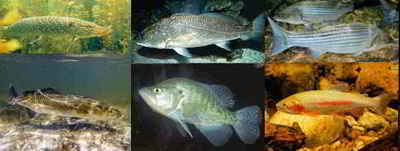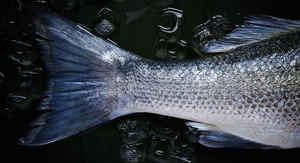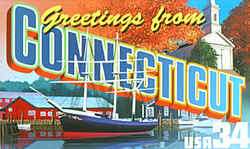
Connecticut Symbols
Connecticut State Fish
American Shad
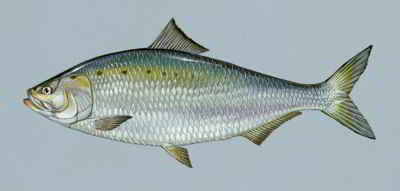
(Alosa sapidissima)
Adopted in 2003
The American Shad, (Alosa sapidissima,)was designated as Connecticut state fish by the General Assembly in 2003. It was selected because:
- it is a native Connecticut fish;
- it has great historical significance in that it provided food for Native Americans and colonists;
- it was, and continues to be, of great commercial value to the State; and
- because the hardiness of this migratory fish reflects the true Connecticut spirit as stated in our motto "Qui Transtulit Sustinet " (He Who Transplanted Still Sustains).
Connecticut State Fish: American Shad
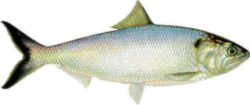
The American shad, (Alosa sapidissima,) the largest of the herring family, is a favorite Connecticut River sport fish.
In Connecticut, shad are caught by anglers and commercial fisherman. Shad festivals and derbies are held in several Connecticut towns during the yearly shad run.
Characteristics of the American Shad
American shad are silvery with coloration shading from bluish dorsally to white ventrally. They have a deeply forked tail. They are delicate, readily experiencing scale loss and torn mouths when caught by anglers. American shad may reach lengths of 24 inches and usually weigh 4 to 7 pounds, females typically being larger than the males. The Latin name Alosa sapidissima means "most delicious." Both the meat and roe are considered delicacies.
The fish is known for its bone structure. Native American legends states that the shad originated as a porcupine that was continually complaining to the Great Spirit. As punishment, the Great Spirit turned the porcupine inside out, and threw it in the water. Shad boning is a difficult tasks that takes years to learn.
Life History
It is an anadromous species, meaning that it lives most of its life in the ocean, but returns yearly to specific freshwater streams to spawn. In Connecticut, shad enter the Connecticut River from April to June, depending on the river water temperature. Adult shad enter the river in the spring, generally reaching the Holyoke Dam (southern Massachusetts, 86 miles upstream) in late April to early June. Male (buck) shad tend to precede the female (roe) shad. Spawning occurs in the Connecticut River main stem and its larger tributaries in the spring. Juveniles remain in spawning areas until their seaward migration in the fall.
Distribution
The historic range of American shad was from the St. Lawrence River to Florida. Shad are still distributed throughout their historic range but shad are concentrated in east coast rivers between Connecticut and North Carolina. American shad are native to the Connecticut River watershed, where they currently reach as far north as the impoundment above Bellows Falls Dam (175 miles upstream). Bellows Falls is believed to be the historic upstream limit of American shad prior to the construction of dams on the Connecticut River.
Taxonomic Hierarchy: American Shad
Kingdom: Animalia - animals
Phylum: Chordata
Class: Actinopterygii
Order: Clupeiformes
Family: Clupeidae
Genus: Alosa
Subgenus: (Alosa)
Species: A. (A.) sapidissima
